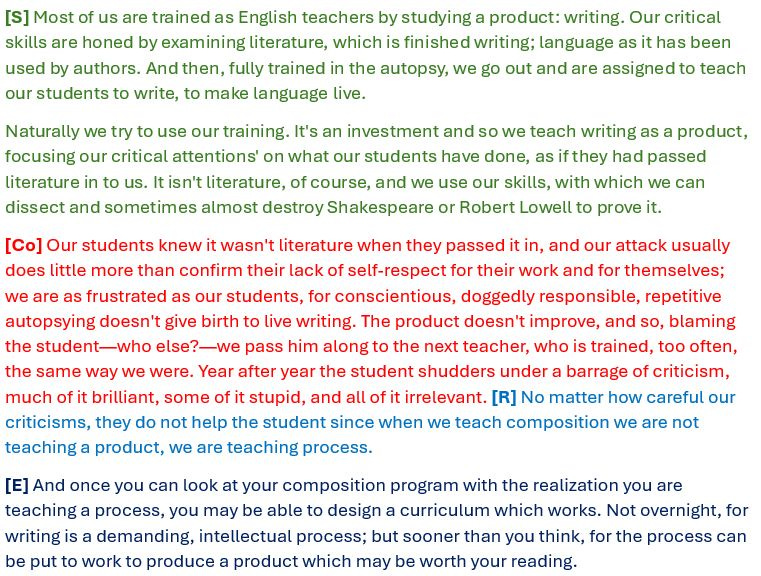Don Murray Masterclass #1: The SCoRE Introduction
A few months ago, I analyzed Sam Anderson’s brilliant article on the 2024 White Sox. This time, I'll break down Don Murray’s classic essay, “Teach Writing as a Process, Not Product,” starting with his SCoRE introduction.
SCoRE stands for Situation, Complication, Resolution, and Explanation. Here's how it works:
Situation sets the stage by providing the starting point, context, or background.
Complication introduces a problem or challenge, creating tension and capturing the reader’s attention.
Resolution offers a solution to the problem or an answer to the challenge. Often, this is the essay’s thesis statement.
Explanation expands on the resolution, exploring its implications or describing how solving the problem improves things.
You’ve seen this structure before—even if you didn’t realize it. The Gettysburg Address is one example:
[S] Four score and seven years ago... (the context and background)
[Co] Now we are engaged in a great civil war… (the challenge)
[R] It is for us the living…to be dedicated here to the unfinished work… (the solution)
[E] …that these dead shall not have died in vain...that government of the people, by the people, for the people, shall not perish from the earth. (implications for a better world)
You've seen the first two elements in film descriptions; the Netflix film "The Six Triple Eight," for example:
[S] During WWII, the only US Women's Army Corps unit of color stationed overseas [Co] takes on an impossible mission in Tyler Perry's drama based on a true story.
The [S] and [Co] create narrative tension to hook the viewer; you'll have to watch the movie to see the [R] and [E].
Murray uses the same approach. I’ve marked and color-coded the SCoRE elements in his introduction below:




